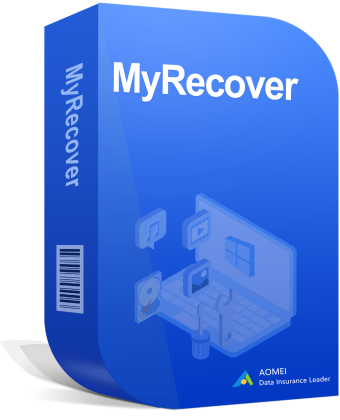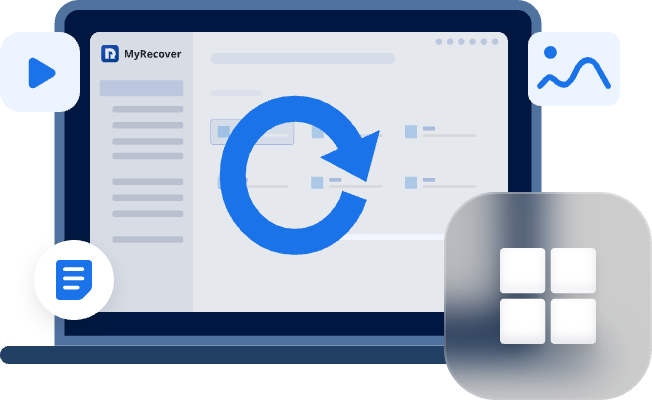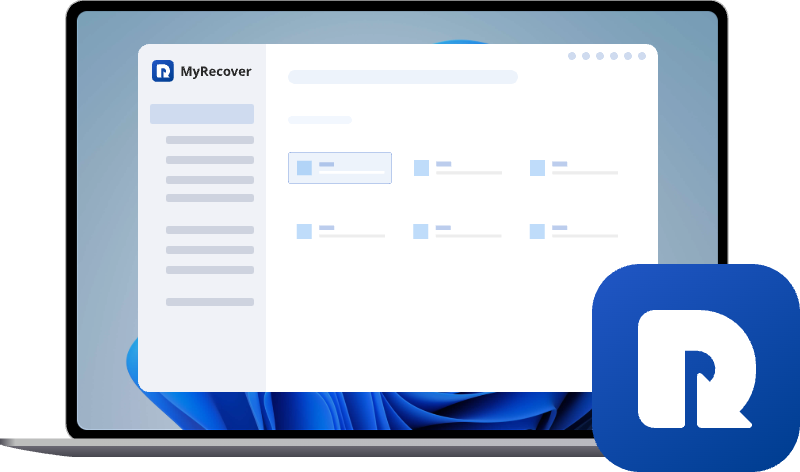Fixed: Location is Not Available in Windows 11 or 10
If you encounter the "Location is not available" error on Windows 10 or Windows 11, you’re not alone. This issue can prevent access to your files, folders, or drives, and may display messages such as "Access is denied" or "The parameter is incorrect". In this guide, we’ll explain the main causes of this error and provide step-by-step solutions to fix it.
About the Error: Location is Not Available
The "location is not available" error is a common issue in Windows 10 and Windows 11. It usually appears when you try to access a folder, file, or drive, and Windows prevents you from opening it. This error can interrupt your work, cause confusion, and even lead to concerns about lost or inaccessible data.When this error occurs, you may see messages such as:
- "Access is denied"– This usually means that you do not have the necessary permissions to open the file or folder.
- "The parameter is incorrect"– This indicates that Windows cannot read the file path correctly.
- "The volume does not contain a recognized file system"– This error appears when the disk or partition is damaged, formatted with an unsupported file system, or corrupted.
- "The file or directoryis corrupted and unreadable"– This message means that the specific file or folder has been damaged and cannot be read by Windows.
Other signs that you might encounter along with this error include:
- Files or folders appearing empty even though they contain data
- The system freezing or taking a long time to respond when trying to open a location
- Sudden loss of access to external drives, USBs, or network drives
Why Does It Say My Location is Not Available?
The "Location is Not Available" error appears when Windows cannot open a folder, file, or drive. It usually happens because something is stopping Windows from accessing it. Common reasons include:
🧿Permission problems: You may not have the rights to open the folder or file, or it belongs to another user account.
🧿Damaged or corrupted files: The file or folder may have been damaged by a crash, power outage, or virus.
🧿Drive or disk issues: The hard drive, SSD, or USB device might be physically damaged, disconnected, or not powered properly.
🧿File system errors: Windows may not recognize the drive because its file system is corrupted or unsupported.
🧿Driver problems: Missing or outdated drivers can prevent Windows from reading your device.
🧿Path or name issues: The file path may be too long, contain invalid characters, or the folder may have been moved or deleted.
Understanding the underlying reason is essential because it determines which solution will safely restore access to your files.
How to Fix "Location is Not Available" Error?
Depending on the cause behind the error, there are several ways to fix it. Here’s the step-by-step guide:
1: Check Connections and Power
If you are using an external hard drive, SSD, or USB flash drive, one of the most common reasons for the "Location is Not Available" error is a poor connection or insufficient power. First, make sure the device is properly plugged into your computer. Loose connections can prevent Windows from recognizing the drive, even if it appears physically attached.
Try unplugging the device and reconnecting it. If possible, use a different USB port directly on your computer instead of a hub, as hubs may provide unstable power. Make sure any external power adapter for the drive is connected and working.
Check the cable as well because damaged or faulty cables can prevent proper communication. If available, try another cable or connect the drive to a different computer to see if it works.
2: Restart the File Explorer
Sometimes, the "Location is Not Available" error appears because Windows Explorer (File Explorer) is not responding properly. Restarting it can refresh the system and often fixes the issue.
Step 1. Press "Ctrl + Shift + Esc" to open the Task Manager.
Step 2. In the "Processes" tab, find Windows Explorer.
Step 3. Right-click Windows Explorer and select "Restart".
After a few seconds, your desktop and taskbar may disappear briefly and then reappear. This is normal—Windows Explorer is restarting. Once restarted, try opening the folder, file, or drive again. In many cases, this simple step resolves the error without further troubleshooting.
3: Reset Your User Permissions
Sometimes the "Location is Not Available" error occurs because your Windows user account does not have the necessary permissions to access certain folders or drives. Resetting your user permissions can fix this issue and restore access to your files.
Step 1: Right-click the folder or drive that shows the error and select "Properties". Go to the "Security" tab to view the current permissions.
Step 2: Click "Edit", then select your user account.
Step 3: Make sure "Full Control" is checked. If your account is not listed, click "Add", enter your username, and then assign "Full Control".
Step 4. Click "Apply" and "OK" to save the changes.
Try opening the folder or drive again. If the permissions were the problem, you should now have full access and the error will no longer appear.
4: Reset Authenticated Users
If a folder shows the "Location is Not Available" error, sometimes the problem is caused by incorrect permissions for authenticated users. Resetting them (through removing first and re-adding them again) can restore access.
Like the last method, Right-click the folder, select "Properties", then go to the "Security" tab, and click "Advanced".
Highlight each listed username. Click "Remove" for every user shown. This clears any corrupted or misconfigured permissions.
Click "Edit", then "Add", and enter the username you want to grant access. In the permissions window, check Allow for all applicable permissions to ensure full access. Click "OK" to save changes, then restart your PC. Your folder should now be accessible.
5: Check and Fix File System Error
File system errors can also trigger the "Location is Not Available" message. Running a system check can repair these errors and restore access:
Step 1. Press "Windows + S", type "cmd", right-click "Command Prompt", and select "Run as administrator".
Step 2. In the Command Prompt, type the following command and press Enter: chkdsk X: /f (Replace X with the drive letter that shows the error.)
Wait for the scan to complete. Windows will attempt to fix any detected errors automatically. Once the process finishes, try accessing the folder or drive again. This method often resolves errors caused by corrupted or damaged file systems.
6: Restart the RPC
RPC stands for Remote Procedure Call. It is a core Windows service that allows programs and system components to communicate with each other. Many system operations, including accessing drives and folders, rely on RPC to work correctly. If it is not running or has issues, you may encounter errors like “Location is Not Available”, because Windows cannot communicate properly with the file system or network resources.
Step 1. Press "Windows + R"to open the "Run" dialog.Type "services.msc" and press Enter to open the Services window.
Step 2. Scroll down and find Remote Procedure Call (RPC). Right-click RPC and select "Restart". If the Restart option is greyed out, make sure the service is running. If it’s stopped, select "Start".
After restarting the service, try accessing the folder or drive again.
7: Boot into Safe Mode
Booting into Safe Mode can help fix the error because it starts Windows with only the essential drivers and services, preventing third-party programs or settings from interfering.
Step 1. Press "Windows + R", type "msconfig", and press Enter.
Step 2. Go to the "Boot" tab and check "Safe boot", then select "Minimal". Click "OK" and restart your computer. Windows will start in Safe Mode.
Once in Safe Mode, try opening the problematic folder or drive. You can also perform troubleshooting steps such as scanning for errors, checking permissions, or copying files to another location. After finishing, open msconfig again, uncheck Safe boot, click "OK", and restart your PC to return to normal mode.
8: Check the Drive Letter
Sometimes the "Location is Not Available"error occurs simply because Windows has assigned a new drive letter to your external drive or partition. If the system cannot find the original letter, it will show this error.
Step 1. Press "Windows + X" and select "Disk Management". You will see a list of all drives and partitions connected to your PC.
Step 2. Locate the drive that shows the error. Verify whether its drive letter has changed from what you usually use.
Step 3. Right-click the drive and select "Change Drive Letter and Paths".
Step 4. If the drive has no letter, click Add and assign a letter. If it has a letter but it’s different, click "Change" and assign the original letter. Click "OK" to confirm.
After reassigning the correct drive letter, try accessing the folder or drive again.
9: Format the Drive
If all previous steps fail and the drive is still inaccessible, the file system might be corrupted. Formatting the drive can restore access, but it will erase all data on it. Make sure to back up any recoverable data first.
Locate the problematic drive in Disk Management. Right-click the drive and select Format. Choose a file system (NTFS for Windows drives), provide a volume label if desired, and click OK.
After formatting, the drive will be blank but accessible. You can now copy new files to it.
You Might Need: Recovery Solution for Inaccessible Drive
Sometimes, even after trying all the troubleshooting steps, a drive may remain inaccessible. In such cases, you will need a reliable data recovery solution to retrieve your files before attempting formatting or other risky operations.
A professional recovery tool like MyRecover can help you safely scan your inaccessible drive and restore lost or deleted files. It supports a wide range of devices, including HDDs, SSDs, USB drives, SD cards, and more. It also handles multiple data loss scenarios such as accidental deletion, corruption, formatting, malware attacks, or system crashes.

- ✨500+ Devices Supported | SSD, HDD, USB Flash Drive, SD Sard, etc
- ✨1000+ File Formats Supported | PNG, MP4, MP3, TXT, ZIP, MSG, etc
- ✨500+ Data Loss Scenarios | Deletion, Format, System Crash, Virus Attack, etc
- ✨High Success Rate |Industry-leading 99% recovery success rate
- ✨AI-Powered Intelligent Recovery |Built-in AI file recognition & recovery algorithms
- ✨Preview | File preview to verify integrity before recovery
Only 3 Steps Required!! Scan the target drive, preview what you need and recover them.
Final Thoughts
The "Location is Not Available" error can be frustrating, but in most cases, it can be resolved with the right approach. By systematically checking connections, permissions, file system integrity, drive letters, and core Windows services, you can regain access to your files and folders.
If the drive remains inaccessible, using a professional data recovery tool like MyRecover ensures that you can safely retrieve lost data before performing more drastic actions like formatting. With just a few clicks, you can scan, preview and recover files from virtually any storage device, giving you peace of mind.


